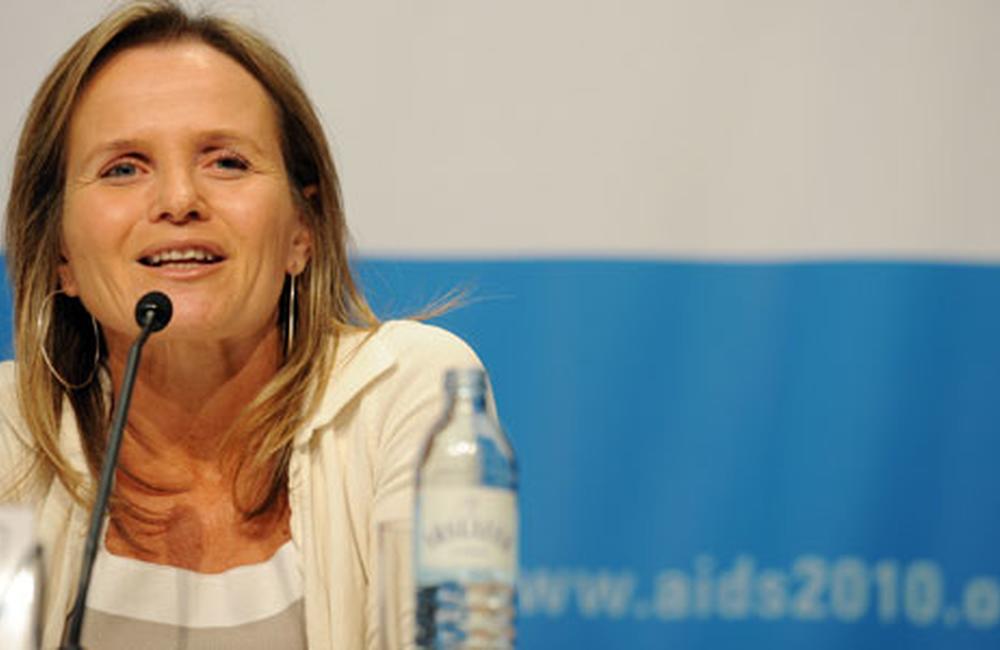
A cure for HIV infection is scientifically feasible and increasingly necessary, but the goal requires focus and funding, said Sharon Lewin of Monash University in Melbourne, in a keynote address at the opening session of the AIDS 2010 conference and at a preceding workshop organised by the International AIDS Society (IAS).
Antiretroviral therapy has dramatically reduced illness and increased survival, but people with HIV still do not achieve normal life expectancy relative to the general population, Lewin said. In addition, a growing body of evidence indicates that even very low-level virus contributes to a number of health problems.
The most sensitive tests can find residual HIV in almost everyone infected, including people on effective combination therapy and elite controllers who suppress the virus naturally. "There is no such thing as an undetectable viral load," Lewin added.
As Steven Deeks from the University of California, San Francisco explained at an IAS pre-conference meeting on HIV reservoirs and eradication, these problems – which range from cardiovascular and liver disease to neurocognitive impairment and bone loss – are increasingly linked to chronic immune activation and inflammation triggered by persistent virus.
"There's some sort of HIV-related problem that's causing people to get sick earlier than they otherwise would have," he said.
What's more, long-term antiretroviral therapy for everyone is not sustainable. Lewin noted that even treating the current 40% of HIV-positive people in low- and middle-income countries starting at the old World Health Organization CD4 threshold of 200 cells/mm3 would cost $25 billion by 2030, whilst increasing coverage to 80% would raise that figure to $35 billion.
The main barriers to curing HIV, according to Lewin, are latently infected T-cells, residual viral replication, and anatomical reservoirs (such as the brain, gut and genital tract) that harbour hidden virus.
Most T-cells in the body are resting, she explained. HIV mostly infects active CD4 T-cells, which produce new virus but then soon die. In resting cells, by contrast, HIV genetic material is integrated into the host cell's genome where it can remain dormant for a long time, but can "wake up" at any point and reignite viral replication.
The IAS workshop devoted considerable attention to the ongoing debate about whether problems in people on suppressive antiretroviral therapy are attributable to residual low-level viral replication, re-emergence of latent virus from reactivated T-cells, or a combination of the two.
Scientists do not fully understand how HIV evades the immune response and establishes latency in resting cells, but a variety of signalling molecules and transcription factors appear to play a role, and thus offer potential targets for intervention.
Intensification of antiretroviral therapy by adding more drugs has not been able to eradicate HIV in multiple studies to date. A more promising approach uses agents such as interleukin 7 (IL-7) to activate resting cells and flush HIV out of hiding. Another strategy uses compounds called histone deacetylase (HDAC) inhibitors to turn on HIV genes.
Some two dozen HDAC inhibitors are under study as cancer treatments and one, known as vorinostat or SAHA, is already licensed for T-cell lymphoma. These agents, along with IL-7, appear safe and well-tolerated and should quickly move into clinical trials, Lewin said. She predicted that a combination approach would be most effective.
Daria Hazuda from Merck Research Labs, speaking at the IAS pre-conference meeting, said her company has screened millions of compounds, including numerous HDAC inhibitors, and found several dozen that warrant further study.
Whilst such agents might achieve a 'functional cure' or long-term remission, future approaches could potentially protect cells completely from HIV infection and thereby achieve a 'sterilising cure'.
The international conference in Vienna will not be the conference where we announce a cure, but it will mark the beginning of a future where we seriously prioritise finding a cure. Professor Sharon Lewin, Monash University
The experience of one man in Germany, dubbed the 'Berlin patient', offers proof-of-concept that this may be possible. Gero Hütter, who treated the patient, described the case at the IAS pre-conference meeting.
The man underwent chemotherapy for leukaemia that destroyed his own immune cells and received bone marrow stem cell transplants from a donor who carried the protective CCR5-delta32 mutation, which makes cells resistance to HIV infection. Within two months after his first transplant the man showed no measurable HIV, despite stopping antiretroviral therapy. Three years later, he still shows no signs of infection.
While widespread bone marrow transplants are not realistic, Lewin acknowledged, this patient tells us that getting rid of latently infected cells and living without antiretroviral treatment is possible, and we need to learn why. Researchers are now pursuing a related approach, using gene therapy to make cells HIV-resistant.
Lewin urged greater resources for an HIV cure and a collaborative effort of basic scientists, clinicians, pharmaceutical companies and funders, as exists for HIV vaccine research. In recent months, amfAR and the US National Institutes of Health have announced funding for cure research, though advocates argue that it is not sufficient.
"The international conference in Vienna will not be the conference where we announce a cure," Lewin concluded, "but it will mark the beginning of a future where we seriously prioritise finding a cure."
Watch the keynote address from Sharon Lewin on the Kaiser Family Foundation website.
